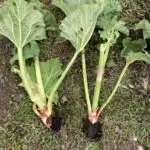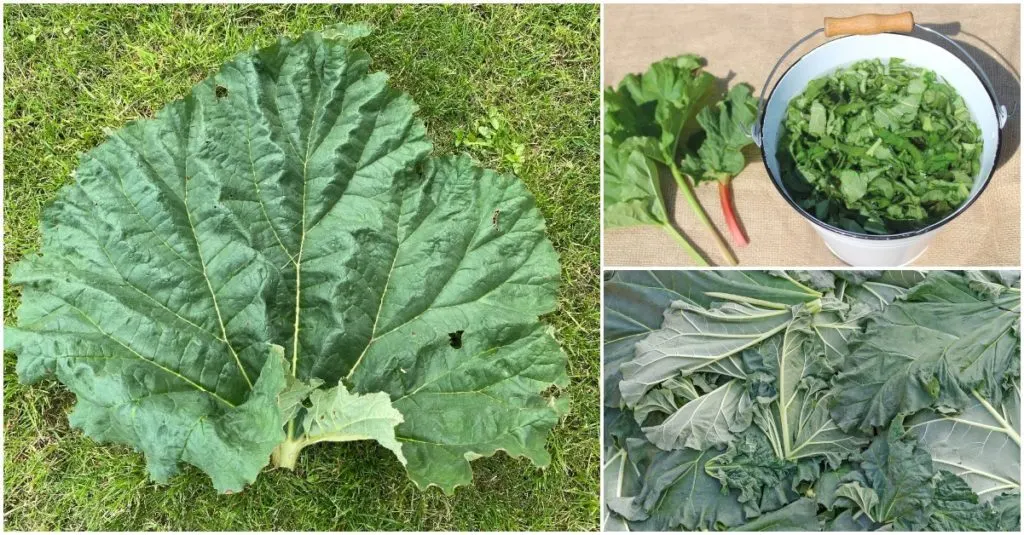
As winter ends, rhubarb is one of the first garden plants to greet us in the spring.
This hardy perennial produces tangy stems that are perfect in pies and cobblers and so much more.
A single rhubarb plant can live for up to a decade, but splitting the stem into multiple plants can further maximize your harvest.
This spring, I split up my two four-year-old rhubarb plants into five new plants. A year from now, I should be harvesting close to three times as much rhubarb as before.
Dividing rhubarb is an easy project that took less than an hour, and I’ll reap the rewards of my efforts for springs to come.
Dividing rhubarb plants is an easy garden project—let me walk you through the steps to get it right.
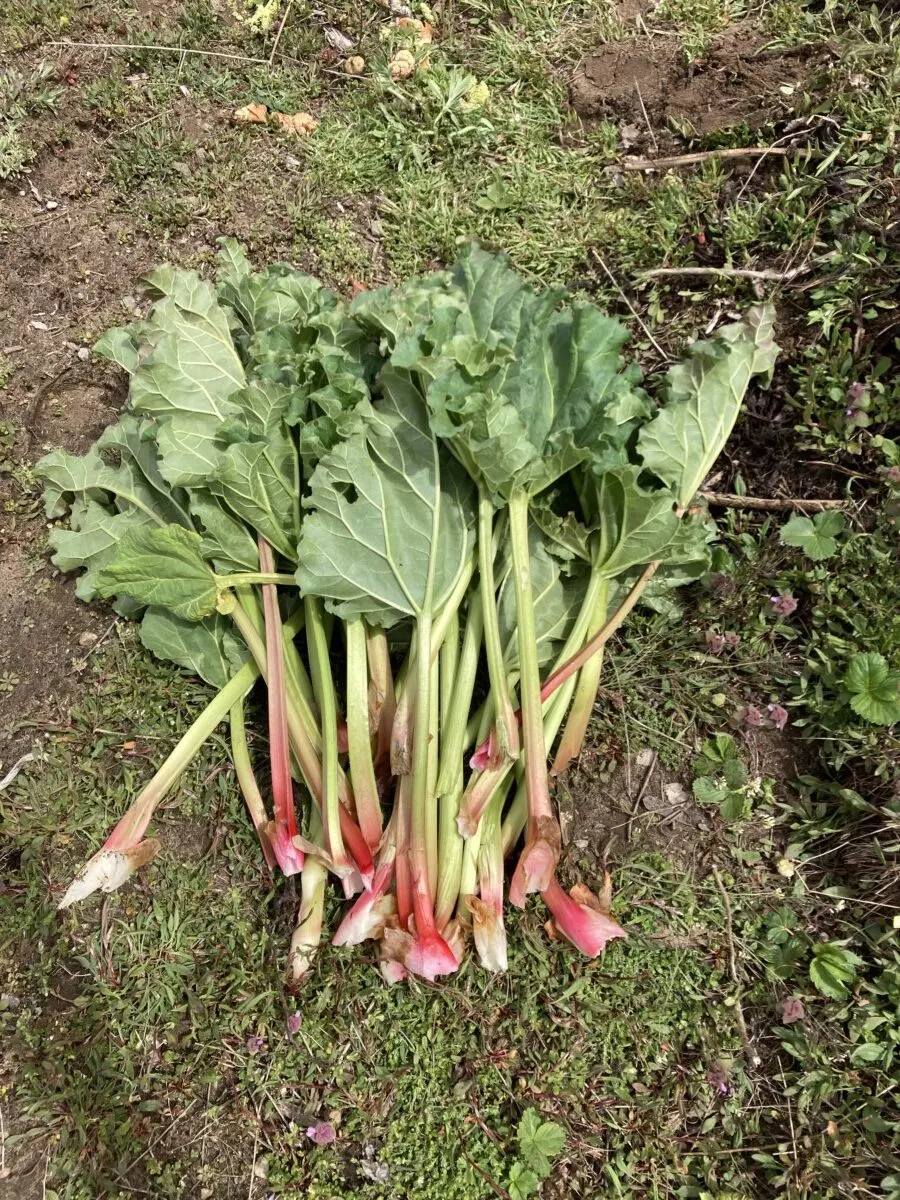
Why Split Rhubarb Plants?
Splitting rhubarb crowns into new plants has multiple benefits, especially when compared to purchasing them new.
- When you split rhubarb plants from your garden or a friend’s, you’re getting plants that are already acclimated to your growing zone and potentially even your soil conditions. In contrast, plants purchased from a greenhouse could have come from anywhere in the country and might become stressed in your garden.
- Purchasing perennials can be expensive. Splitting the ones you already own is free.
- Splitting up an established plant can revitalize them, especially older ones that have started to crowd their planting bed.
- Rhubarb seeds and bare root crowns can take years to reach maturity. Divided plants, in contrast, are ready for harvest the following spring.
- Rhubarb plants are hardy and difficult to damage. Splitting off some of the roots won’t hurt the rest of it.
When to Split Rhubarb
Rhubarb plants are best split in the late fall after the first frost or in early spring as soon as the soil can be worked.
Ideally, you want to split the plants when the leaves are still under a foot tall. This leads to the least amount of stress on the plant. However, the plants are forgiving if you get to them later than expected, as I did this year (mine measured about 18 inches when I split them).
Where to Plant Rhubarb
Think through your planting location for rhubarb carefully. Since it’s a perennial, the plant may call this spot home for the next decade.
Ideally, rhubarb should be in full sun. At a minimum, it needs sunlight for six hours a day. Avoid shady spots and locations close to trees that may compete with nutrients. Give the plants rich, moist soil that has been amended with compost.
How To Split Rhubarb
In principle, dividing rhubarb is simple. You’re digging up an existing plant, splitting up the roots (the crown) and replanting these smaller sections with enough space to grow to maturity.
Here’s a detailed breakdown of the process.
Choose a healthy, well-established plant.
Whether you’re dividing your own rhubarb or sourcing some from a friend’s garden, it’s best to work with plants that are four to five years old to ensure they have a robust root system to handle the tampering. Younger rhubarb will work, but only if the plant is vigorous.
Avoid any plants that look sick or diseased. While it’s tempting to think that dividing a suffering plant will help it perk up, you’ll just be spreading the wrong to another part of your garden.
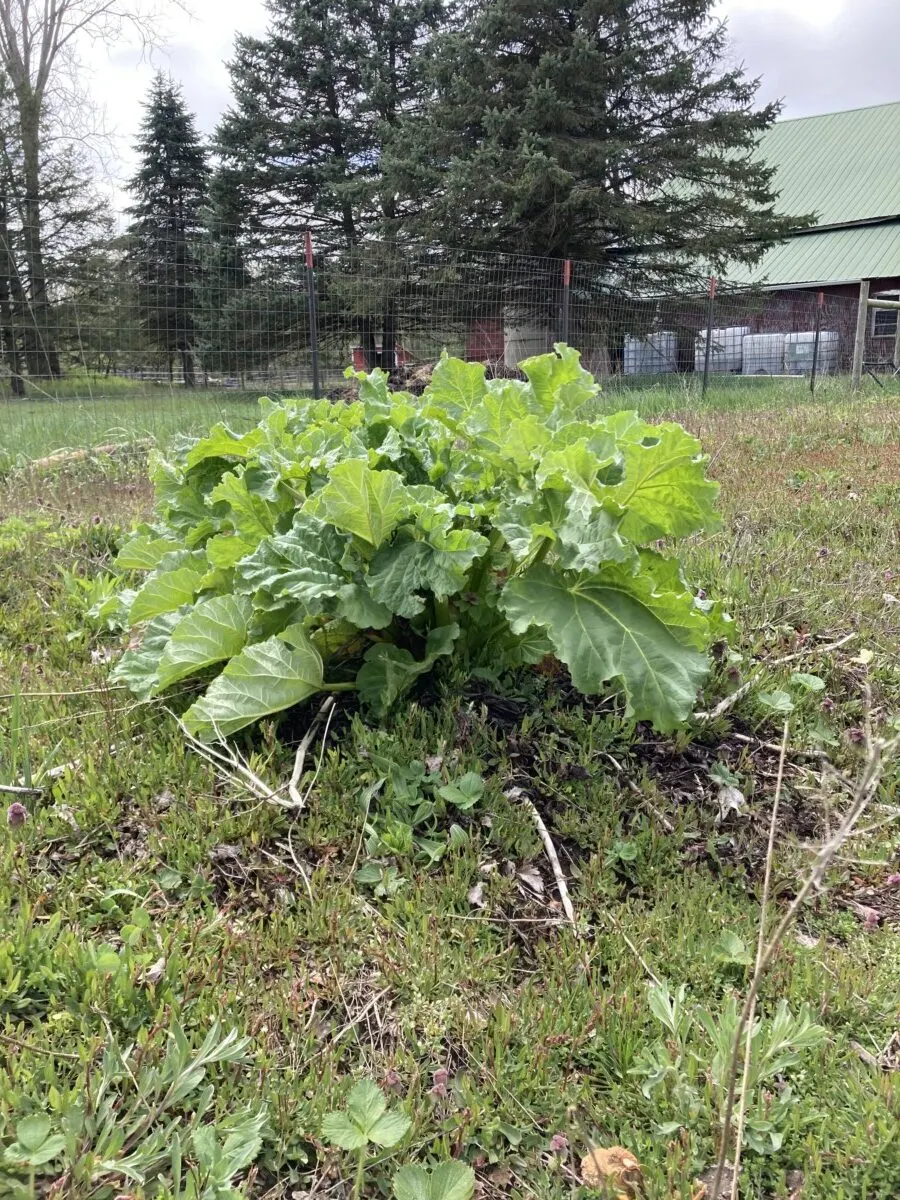
Prepare your tools.
Dividing rhubarb works best with a large spade, sharp shears, and a bucket for the crowns if you don’t plan to replant immediately. Ideally, you should clean and sanitize tools before getting started to reduce the risk of spreading disease.
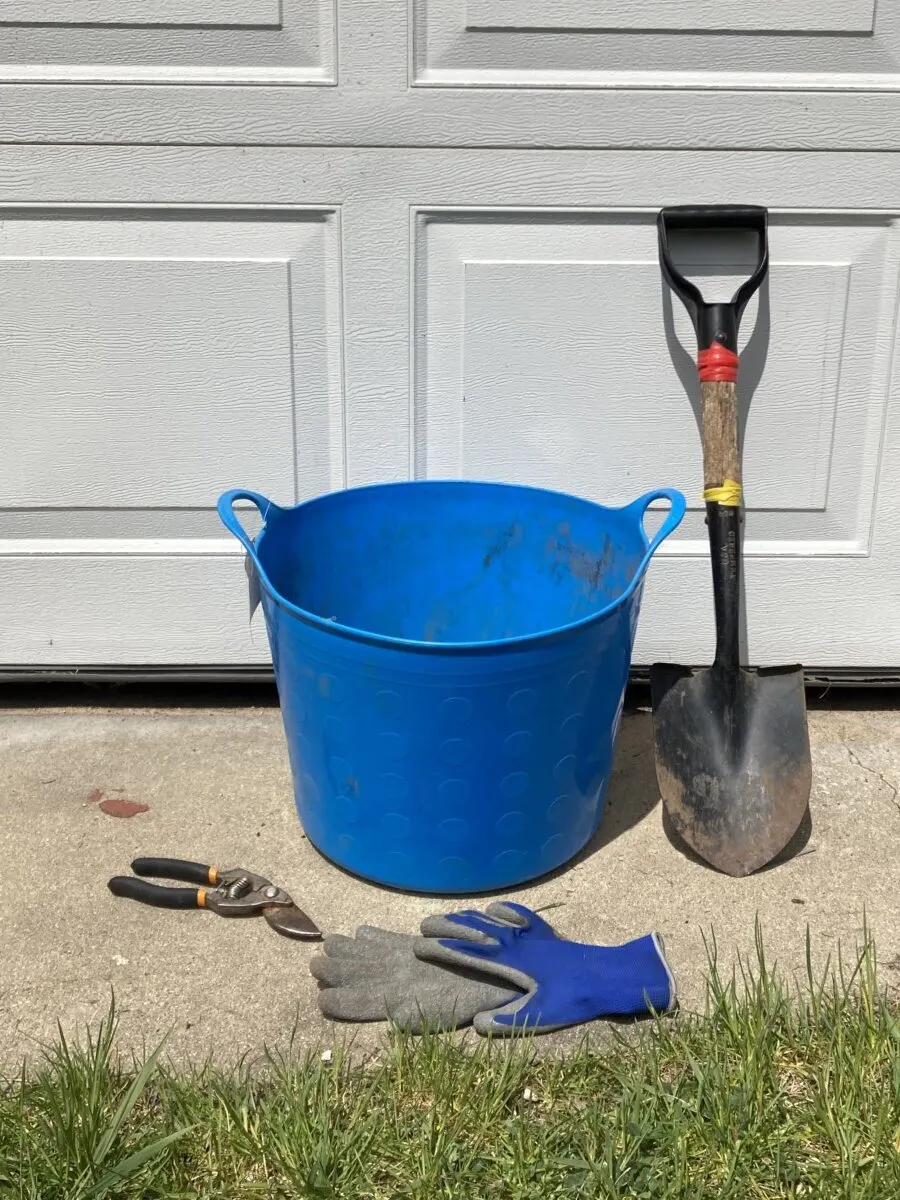
Dig up the root ball.
Using your spade, dig around the rhubarb to loosen the dirt. Slide the spade underneath to pop part of the plant to the surface. Next, using a slicing motion, shear some of the root ball off the main plant. Take care to leave as much of the root intact as possible.
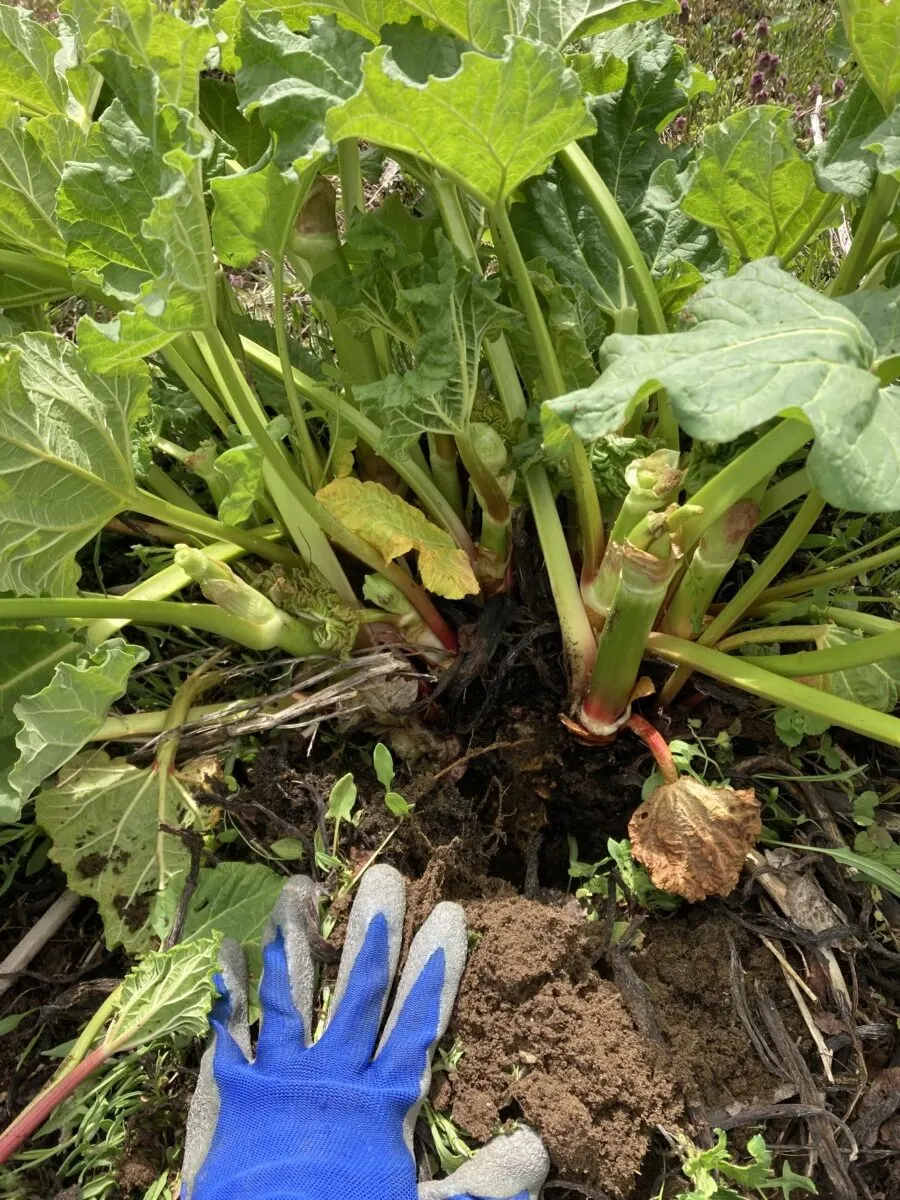
Identify the rhizomes and petioles.
A rhubarb’s rhizomes are the thick parts of the stem found underground that roots grow off from. Just above the rhizomes, you’ll find small pink buds known as petioles. Each has the potential to reroot and grow a new plant.
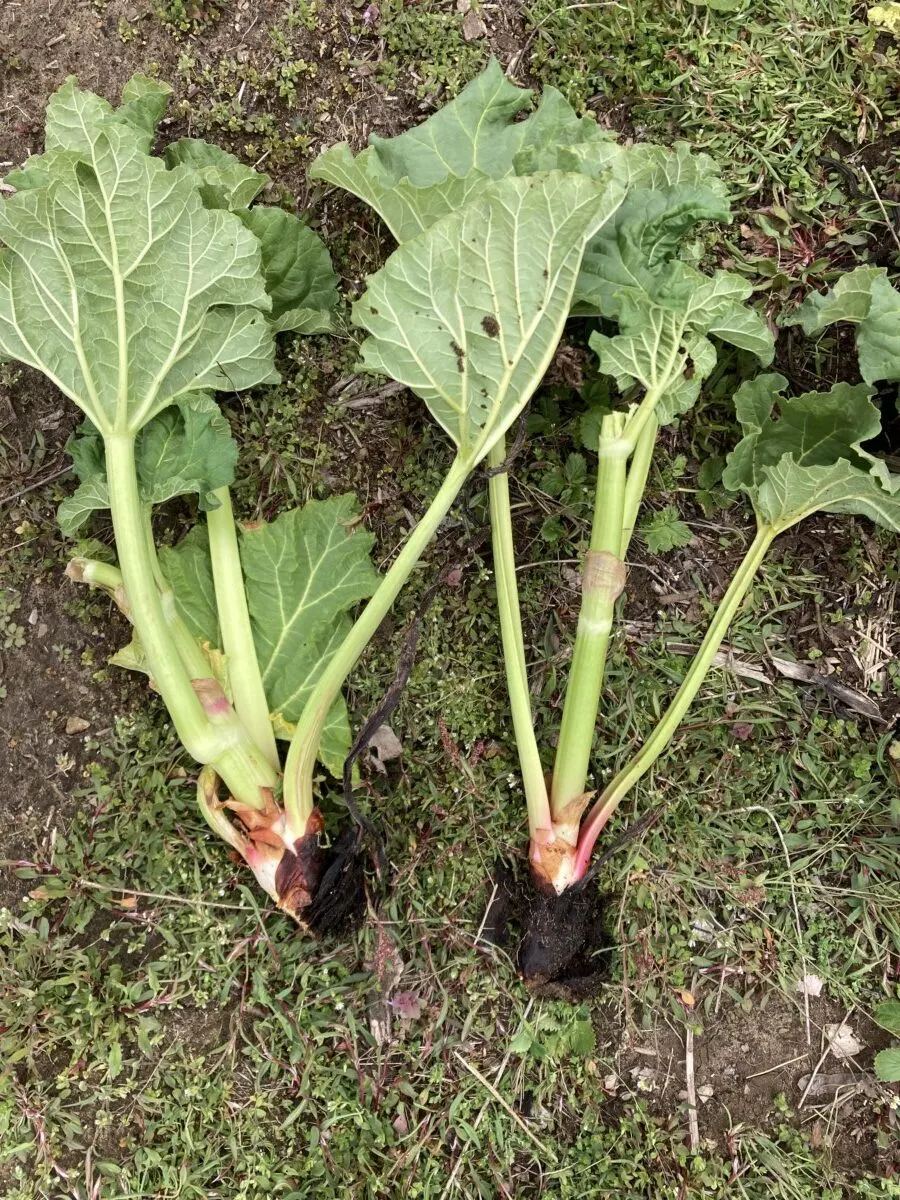
Split up the root ball.
Shear off sections of the plant you dug up, ensuring that there is at least one petiole per piece. Each piece should have a chunk of rhizome, at least one bud, and evidence of root development.
Remove rot and decay.
Working with each section, use clean gardening shears to remove any slimy, mushy, or clearly decayed plant matter from around the rhizomes. A small amount of rot is normal—especially for rhubarb growing in wet soil—but the new plant sections will do best if given a clean start.
Note: If you see signs of severe issues like root disease or fungus, it’s better to discard the crowns entirely and wait to divide the main plant until you can treat the problem.
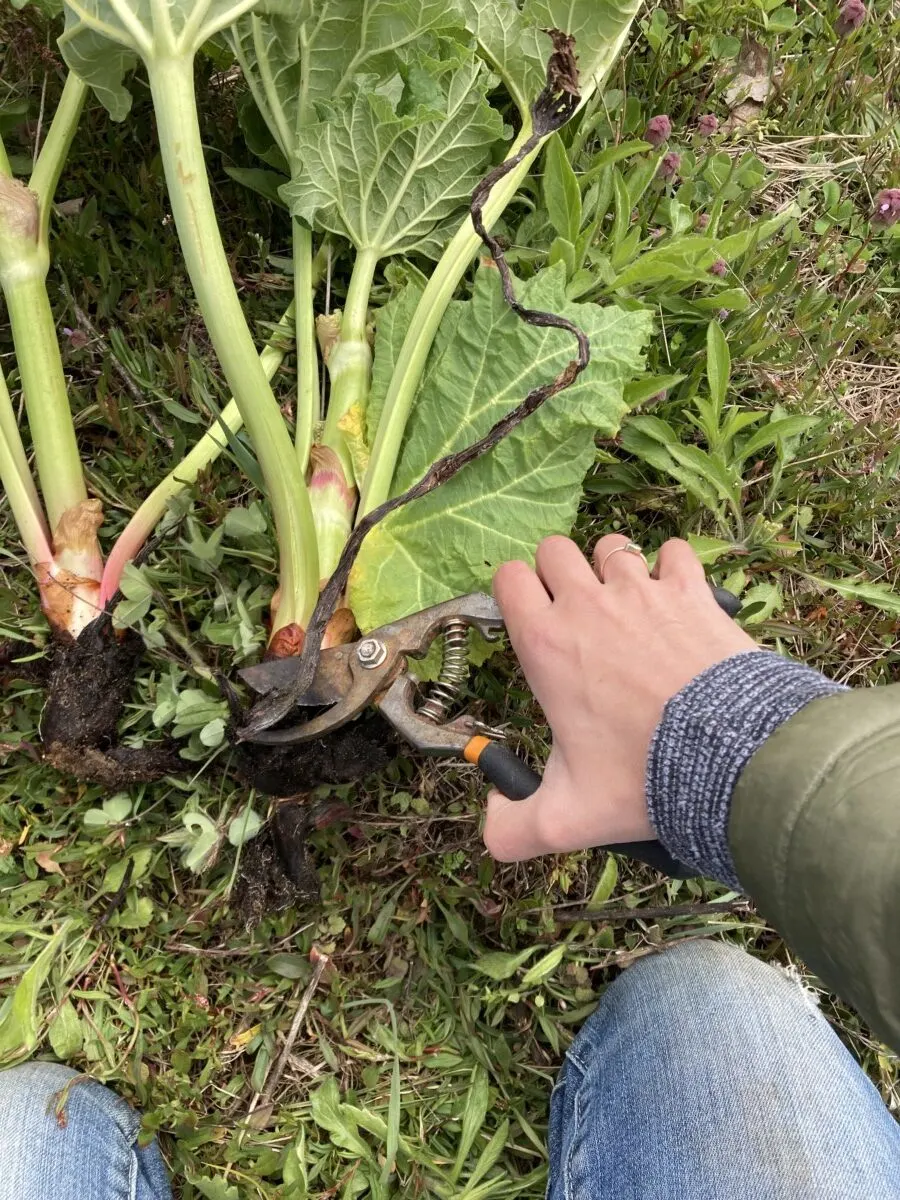
Prepare for replanting.
Ideally, you should replant rhubarb soon after dividing it. The earlier in the spring, the better, as this provides a longer growing season to help the cutting get established. It also ensures the plant hasn’t put out much growth yet, which makes the transplant process less stressful.
If you can’t replant immediately, wrap the rhizomes in a damp paper towel and store them in a cool dark place until you can.
Prep the replanting space.
Prepare garden space for the rhubarb cuttings to grow long-term. Clear the area of weeds and dig a hole twice as deep as the roots. Backfill it halfway, adding compost in the process. If the space recently was home to a diseased plant, consider removing the soil to replace it with fresh.
Plan for at least three feet of spacing between each division to allow room for the plants to mature.
Replant the rhubarb.
Place each rhubarb cutting in one of the prepared holes, roots and rhizome down. Cover with at least an inch of soil and tamp it in place to remove any air pockets. Layer it with a mulch of straw or dried grass around the stems, water thoroughly, and wait.
You can expect to see new shoots forming within two to three months.

Caring for and Harvesting from Rhubarb Transplants
Rhubarb is notoriously hardy, meaning the plants can be largely left alone after they are established. However, the plants may need some nurturing to get to that point.
Plan to water new transplants weekly, especially if you live in a hot climate.
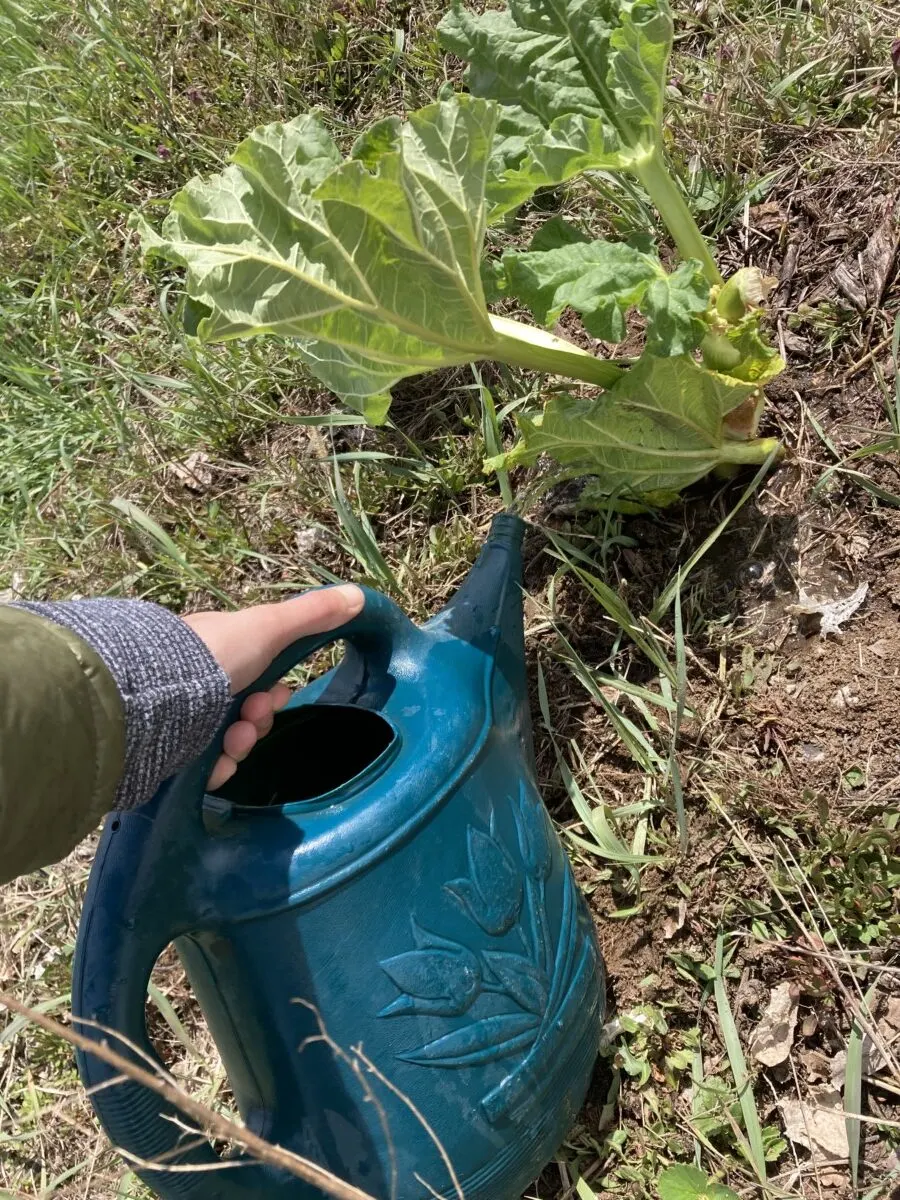
Rhubarb is ready to harvest from late spring through mid-summer. Pick stalks once they have reached about a foot in length—any longer, and they might get tough and fibrous. Let the plants go natural by mid-summer so they can produce their large, fan-shaped leaves and store up energy for next season.
Only harvest lightly the first year to ensure the plant can put its energy into root production. It’s best to ensure there are always eight to ten stalks on each plant. By the second year, you can harvest without restraint.
Establishing new rhubarb plants from cuttings is an easy process that pays off fast—far faster than growing the plants from seed. Take time to set your plants up for success, and they’ll provide you with the prized ingredient for spring pies for years to come.
Read Next:

Get the famous Rural Sprout newsletter delivered to your inbox.
Including Sunday musings from our editor, Tracey, as well as “What’s Up Wednesday” our roundup of what’s in season and new article updates and alerts.


